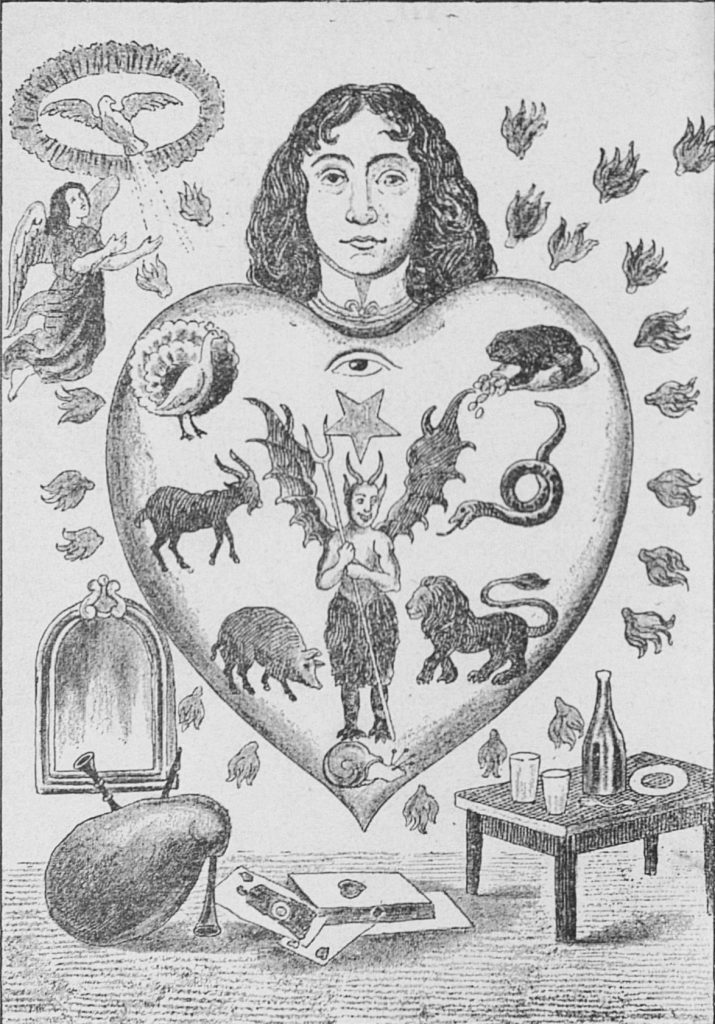We have all likely heard of the Seven Deadly Sins, and many have a general idea of what they represent.
However, to truly understand the Seven Deadly Sins, it’s important to know where they’re from, what they do indeed represent, and what they’re for. Here are some fun facts about the Seven Deadly Sins you’ll want to watch out for!
1. Where do the Seven Deadly Sins come from?
In case you didn’t know, the Seven Deadly Sins are closely linked to Christianity. In fact, the concept of the Seven Deadly Sins dates back to the early centuries of Christianity. They were originally compiled by theologians as vices that lead to further immoral behaviour.
2. Don’t bother looking them up!
If you have looked for a mention of the Seven Deadly Sins in the Bible, do not be worried if you cannot find them. Your Bible is not defective, they simply are not mentioned in it! However, even though the specific list of the Seven Deadly Sins is not mentioned in the Bible, various scriptures do mention individual sins that are associated with the concept.
3. What makes up the Seven?
So, what are the sins you should watch out for? The traditional list of the Seven Deadly Sins includes Pride, Greed, Lust, Envy, Gluttony, Wrath, and Sloth. Although each sin is known to be part of human nature, they are also considered bad for the soul and best to steer clear of!
4. Capital Sins!
You may have heard of the Seven Deadly Sins being referred to in another way. They are also known as “capital sins.” You might even know them as “cardinal sins,” too.
5. There are counter virtues on hand to help.
It’s not all doom and gloom! In fact, each Deadly Sin is believed to have a corresponding virtue that helps to balance it out. For example, Humility counters Pride, Charity counters Greed, Chastity counters Lust, Kindness counters Envy, Temperance counters Gluttony, Patience counters Wrath, and Diligence counters Sloth.
6. We see them all around us.
Even if you are not personally familiar with the Bible and Christian teachings, chances are that you have been met with representations of the Seven Deadly Sins before! They have been widely depicted in various forms of art, litreature, films, and more.
7. Dante’s work delved deep into sinful talk.
Of course, we could not talk about the Seven Deadly Sins without mentioning Dante! Dante Alighieri’s famous work, “The Divine Comedy,” includes a vivid description of the Nine Circles of Hell, where each sin is punished – via “The Inferno.” The sins are placed in descending order, with Pride being the worst and Lust being the least severe.
8. They’re the stuff of Hollywood scripts, too!
If you like thrillers, then you may want to watch the film Se7en. The film, starring Brad Pitt and Morgan Freeman, tells the story of two detectives trying to stop a serial killer who is obsessed with the Seven Deadly Sins. However, fair warning, the film is not for the faint of heart!
9. It’s all about psychology.
Although the Seven Deadly Sins are deeply rooted in religion, they also have a fascinating psychological interpretation. Some psychologists view them as basic human tendencies that, when uncontrolled, can lead to destructive behaviour.
10. We apply the Seven Deadly Sins in many different ways today.
As you may have noticed, the Seven Deadly Sins continue to be discussed and referenced in modern society. The sins are often used metaphorically to describe patterns of behaviour that are considered morally or socially unacceptable to this day!
FAQs about the Seven Deadly Sins
What is the eighth deadly sin?
Although some believe that there are, in fact, eight deadly sins, that is not exactly the case. A Christian monk, Evagrius Ponticus, was known for having written eight evil thoughts. These were gluttony, avarice, sloth, anger, lust, sadness, pride, and vainglory.
Why is sloth a sin?
Although being lazy hardly seems that bad, there is a reason why it is considered a sin! Sloth supposedly reflects a disinclination towards love, contribution, faith, and even general self-care (and those of others).
What is the gluttony sin?
Gluttony can be defined as intemperate eating. It is indeed considered to be a sin.
Further reading:
https://www.bibleinfo.com/en/questions/what-are-seven-deadly-sins
https://www.britannica.com/topic/seven-deadly-sins
Do you know any fun facts about the seven deadly sins? Share them in the comments below!
